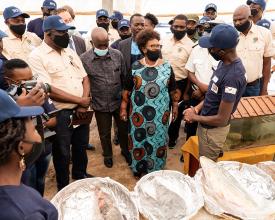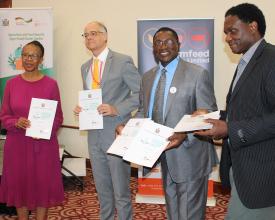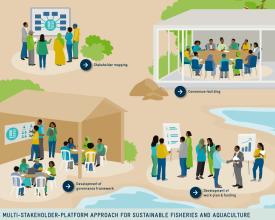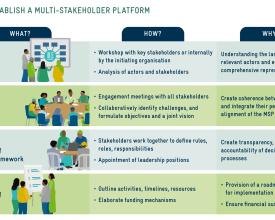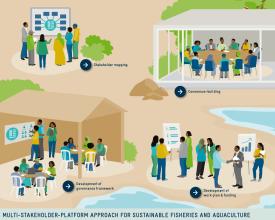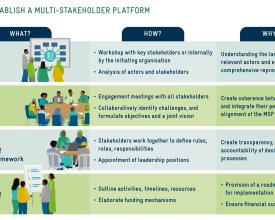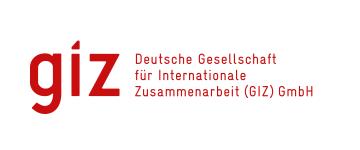
Multi-Stakeholder-Platforms for sustainable fisheries and aquaculture
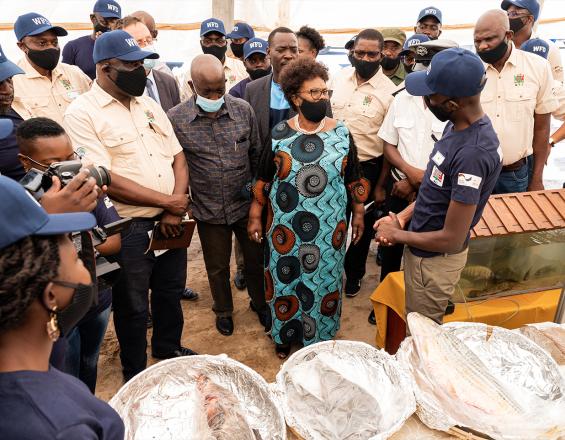
Aquatic products, particularly fish, play a vital role in global food and nutrition security, driving the expansion of the fisheries and aquaculture sector and highlighting its economic significance.
However, the sectors face multiple challenges, such as overfishing, degradation of aquatic ecosystems, unsustainable practices and inadequate policies. These issues not only threaten food and nutrition security but also jeopardise livelihoods of communities' and individuals who depend on fish.
To address these challenges, the Global Programme Sustainable Fisheries and Aquaculture employed Multi-Stakeholder-Platforms (MSPs) as a key tool for fostering sustainable management. By bringing together diverse actors, MSPs draw upon expertise, experiences and perspectives and implement concrete measures.
As a holistic and integrative approach, MSPs can be highly effective in fisheries and aquaculture through collaborating on joint solutions such as improved policies, better resource management, and stronger partnerships.
Context
Challenges addressed
The sectors are facing a wide range of challenges such as
- overfishing
- harm to aquatic ecosystems
- diseases
- post-harvest losses along the value chain
- inadequate policies
- lack of data
- knowledge and education
- climate change impacts
These challenges can occur in connection with other sectors and fields such as water, agriculture, and environmental protection. With various actors involved, this highlights the complexity associated with these challenges.
This poses a threat to food and nutrition security, as well as to the many communities and individuals whose livelihoods depend on fish. Especially since the majority of fish-value-chain actors in developing countries (e.g. fishers, vendors) operate informally.
Location
Process
Summary of the process
Multi-Stakeholder-Platforms (MSPs) have become a vital instrument uniting actors from public and private sectors, non-profit and civil society organisations, research institutes and academia to address shared challenges. MSPs foster joint challenges by leveraging diverse expertise, experiences, and perspectives to implement concrete measures and achieving measurable results.
During the formation and establishment of MSPs, a number of steps were taken to ensure the platform involves a diverse range of stakeholders, operates effectively, and works towards a joint mission and vision on a sustainable, long-term basis. Stakeholder mapping identified key stakeholder, while consensus-building aligned interest and fostered commitment. A governance framework ensured transparency and accountability, and a structured work plan secured funding for the establishment of MSPs. These steps build upon one another, reinforcing the platform's resilience and effectiveness.
Once established, MSPs require strong management and organisational structures to function effectively. The success of MSPs depended on the integration of these building blocks, where each step reinforced the next, creating an adaptive structure capable of addressing evolving challenges.
Building Blocks
Stakeholder Mapping
To ensure comprehensive representation, stakeholder groups and actors that are directly and indirectly connected to fisheries and aquaculture have to be mapped.
In workshops, key stakeholders jointly identify other relevant stakeholders. General key stakeholder groups and actors that are involved can be:
- Public sector: ministries and departments responsible for fisheries and aquaculture and, potentially, other governmental bodies that are connected to the sector, e.g. dealing with forestry, water, or agriculture
- Private sector: various actors including small scale fishers and fish farmers, large scale operators and companies, as well as actors along the value chain, operating in e.g. feed and gear production, fish processing, transportation, or marketing
- Agriculture farmers having impact on water quality and use
- Other users of water bodies related to aquaculture and fisheries; Civil society organisations and the media
- Cooperating partners: international and national development agencies, international organisations (e.g. FAO, World Bank, WorldFish, WWF, etc.), and development banks
- Academia and research: universities and research institutions
- Traditional leaders
- indigenous communities, and community members
- Conservation groups: agencies working in environmental protection and conservation
Enabling factors
To address the issues and challenges described before and to foster sustainable management, a holistic and integrative approach regarding the different actors involved is needed. The participants of the MSPs should therefore not be one sided but integrate as many actors of the fish value chain and their different perspectives as possible. This guarantees a better understanding of underlying problems and helps to identify appropiate solutions and measures that are supported by all actors.
Lesson learned
Establishing a system that maintains transparency and trust among stakeholders is a fundamental prerequisite and the basis of effective collaboration. Transparency can be achieved through open communication and honest sharing of information among the stakeholders. This should be regarded from the beginning of the MSP implementation process on. See also the upcoming steps to anchor open communication into the governance framework.
Due to the dominance of some powerful stakeholders, other stakeholders could be marginalized. Nevertheless, all stakeholders should be contacted and be given the opportunity to collaborate in the MSP. Later on, especially in the delevopment of the governance framework, mechanisms to ensure power balance need to be implemented to avoid the risk of the dominance of single stakeholders in the MSP.
Consensus-Building
After the stakeholders have been mapped, they are brought together to find common grounds and build consensus. During engagement meetings, facilitated by a moderator of neutral third party, the stakeholders cooperatively:
- identify and discuss joint challenges
- define shared objectives
- formulate a common vision that align with national and global agendas
These collective discussions ensure the inclusion of the different perspectives in the strategic and content-related orientation of the MSP. The creation of a shared vision and joint goals help to align efforts, create ownership, and maintain momentum amongst the members.
Enabling factors
The Stakeholder mapping is a vital first step before the consensus-building. It is an important tool to identify relevant stakeholders for the MSPs objectives. In the fisheries and aquaculture sector, many stakeholders are directly and inidrectly connected to the fish value chain and some could be overseen quickly. But effective measures first require comprehensive representation and collaboration between all stakeholders.
Lesson learned
As MSPs have the long-term purpose of sectoral improvement, members need to recognize that meaningful change may take time and requires sustained efforts. Developing and communicating a clear joint vision helps to keep stakeholders committed to the set goals over the long haul. In terms of communication, the development and sharing of a clear strategy to all new members helps to facilitate communication inside and outside the MSP.
In addition, creating ownership through the allocation of responsibilities keeps stakeholders engaged and should be considered as an essential aspect in terms of sustainability.
Development of Governance Framework
The governance framework will be the steering- and implementation structure and function as the core of the MSP. It should define:
- the rules of operation
- roles of the participating stakeholders
- responsibilities of the participating stakeholders
- leadership positions
The governance framework ensures that the MSP operates efficiently and that decision-making processes are clear and transparent with mechanisms for dispute resolution and conflict management in place.
Enabling factors
As explained in the buidling blocks before, stakeholder mapping for stakeholder identification, consenus-building, shared ownership as well as a common vision for the future are necessary steps before a governance framework can be established. The stakeholders should work together to draft governance documents that outline these aspects, in order to ensure wide acceptance for these documents.
Lesson learned
Establishing a system that maintains transparency and trust among stakeholders is a fundamental prerequisite and the basis of effective collaboration. Transparency can be achieved through open communication and honest sharing of information among the stakeholders. Open communication together with holding stakeholders accountable for their commitments as anchored in the governance framework helps to build trust.
For the successful establishment and management of MSPs, it is also important to consider potential internal risks that exist. One of them being the dominance of powerful stakeholders which marginalizes the voices of smaller or less influential groups. This highlights the importance to implement mechanisms that ensure power balance, especially when developing the governance framework. The rotation of leadership positions and equal say for all members regardless of their size or lobbying power are two possible ways of addressing this.
Development of Work Plan & Funding
To ensure a smooth implementation and to avoid risks, it is key to develop a precise work plan that defines:
- concrete steps to achieve the MSP´s objectives
- clear activities
- timelines
- resources
- necessary funds
- ways to obtain the funds
Enabling factors
Roles and responsibilities must be clearly allocated before developing the work plan and discuss the fundings. The work plan should then be developed collaboratively with input from all stakeholders to ensure that activities are aligned with the platform’s goals and objectives. Is is essential to elaborate in detail the necessary amount of funds as this is the fundament for a smooth implementation of the activities and the overall operation of the MSP.
Lesson learned
Flexibility is a critical factor MSPs should endeavour in order to adapt to evolving sectoral priorities as well as to stakeholder dynamics. Therefore, the platform should be capable and open to react to changes and new information and accordingly revise its strategy and work plan or include emerging stakeholders. This can be achieved through regular evaluations and adjustments – also regarding the general MSP performance – which contributes to the achievement of its mission.
Another important aspect for successful implementation of this approach is the promotion and coordination of research and data collection through the MSP with the goal of ensuring evidence-based decision-making and strategies, and to remain the MSP effective in its mission.
Identifying sustainable funding sources or mechanisms is essential for the long-term viability of MSP, because without adequate financial support, the platform will struggle to maintain its activities. Considering this aspect already in the planning and formation phase of the MSP avoids problems later, especially when the platform is initiated with the financial support of donors that have only limited time and resources for the facilitation.
Management and Organisational Structure of MSPs
The organisational structure of the MSP can vary according to the agreed governance framework, but a common set-up includes a governance body and several working groups. The governance body usually comprises a chair and co-chairs, and a limited amount of members which should represent the stakeholder groups engaged in the MSP.
The tasks of the body will be:
- General steering
- Holding accountability for strategic evolution
- Overseeing the working groups
- Reviewing strategic plans
- Ensuring the engagement of stakeholders
- Holding responsibility for continuous collaboration between platform & government (especially in terms of policy formation)
Enabling factors
Clear and effective communication is vital for the successful functioning of the MSP. Internal communication – usually facilitated by the secretariat – keeps stakeholders informed and engaged. External outreach conveys goals, outcomes, and benefits to the broader community, partners, and funders. Working-group membership is voluntary but should be based on expertise. Depending on urgency and goals, they meet three to six times a year. Governance roles should rotate to ensure fresh perspectives and a dynamic structure. Meetings should occur regularly.
Lesson learned
A potential risk that should be avoided is the occurrence of conflicting interests due to the wide array of stakeholders engaged. This can slow down consensus building and the joint decision-making. Striking a balance between inclusivity and efficiency is a continual challenge.
Impacts
Socially, the MSP fosters collaboration among diverse actors within the fisheries and aquaculture sector and beyond. By engaging various stakeholders under a structured framework, MSPs ensure continuous and inclusive dialogue. This enduring nature and broad focus on sustainable development facilitate long-term collaboration across different groups. MSPs provide an inclusive space where all stakeholders, regardless of their influence or lobbying power, can voice their perspectives. This inclusivity leads to more comprehensive and balanced decision-making processes, ensuring that diverse viewpoints are considered.
Economically, MSPs promote sustainable fisheries and aquaculture management practices and policies. By involving governmental bodies as key members, MSPs significantly influence national policies and strategies. The inclusion of diverse perspectives and experiences ensures that policies are holistic and democratic, addressing the needs of all stakeholders, including small-scale fish farmers. This integrative approach helps sustain livelihoods and supports the economic stability of the sector.
Environmentally, MSPs emphasize sustainability in policy-making, leading to the conservation of natural resources and fishing habitats. Measures such as banning unsustainable fishing practices and implementing climate-resilient strategies ensures the preservation of these resources for future generations.
Beneficiaries
Stakeholders along the fish value chain have an inclusive environment for long-term collaboration for sustainable fisheries and aquaculture and beyond.
Holistic and democratic policies sustain the livelihoods for fish farmers and protect the natural resources.
Sustainable Development Goals
Story
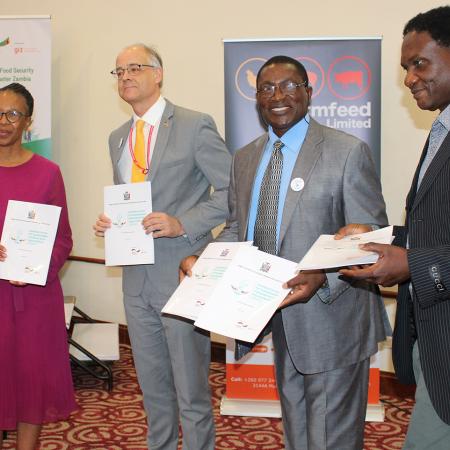
Zambia has 15 million hectares of water in the form of rivers, lakes, and swamps, which provide the basis for extensive freshwater fisheries. Furthermore, there is great potential for aquaculture operations, and as a result, the sub-sector has been expanding rapidly.
In October 2022, the Forum for Sustainable Fisheries and Aquaculture (ZFSFA) was launched with the mission to provide guidance for the sustainable development of the fisheries and aquaculture sector through an integrative approach. The MSP engages actors from diverse stakeholder groups involved in fisheries and aquaculture in Zambia. The main focus of the Forum was to support the Ministry of Fisheries and Livestock and to formulate relevant legislations, strategies, and policies in the fisheries and aquaculture sector which will foster its sustainable development at national and provincial level. One main achievement by the ZFSFA was the submitted input to the 2024 national budget through the Ministry of Finance and the proposed removal of Value Added Tax (VAT) on input for aquaculture production. As per the proposition, the Ministry of Finance waived the taxes for fish farming input such as fish feed ingredients for the year 2024. The Forum also contributed to the development and review of the fisheries and aquaculture policy, which was launched in 2023 as the national fisheries and aquaculture policy by the Zambian Government.
The ZFSFA was one of the main sponsors of the African Aquaculture Conference 2023 held in Lusaka, Zambia, which brought together researchers, practitioners, decision makers, and other stakeholders from all over Africa and beyond to discuss all aspects of aquaculture in Africa under the theme “Resilient value chains in the blue economy”.

